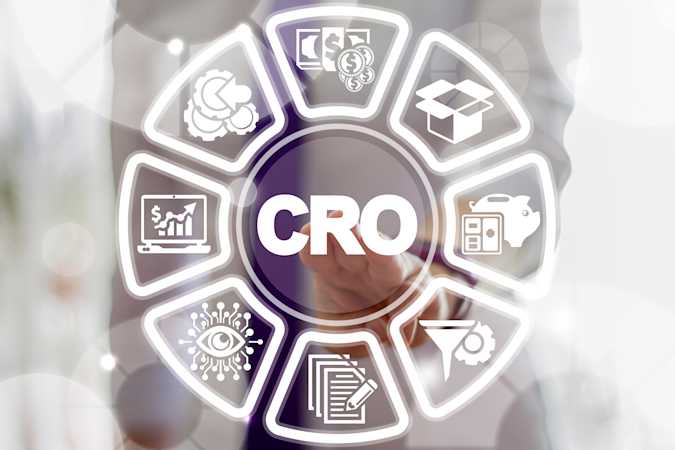Why Optimizing Your Conversion Rate is So Important
14 Jun, 2023
Discover why optimizing your conversion rate is crucial for your business's online success. This in-depth post by DriftLead explores the importance of conversion rate optimization, key influencing factors, and common mistakes.

Jump to:
Hop on our weekly newsletter train! We're sharing tips so stellar, we're practically job-threatening ourselves!
In digital marketing, attracting visitors to your website is just the first step. What really counts is turning those visitors into customers – and that's where Conversion Rate Optimization (CRO) steps in. As a marketer, you want to ensure that every aspect of your website, from the design to the content and functionality, is fine-tuned to guide users toward the desired action, be it making a purchase, filling out a form, or signing up for a newsletter. But why exactly is CRO so critical to your digital marketing strategy?
In this article, we talk about the ins and outs of CRO, uncovering its importance, the key factors that influence it, and some common pitfalls to avoid. Plus, we'll show you how DriftLead's expertise can elevate your conversion rate optimization efforts, enhancing your website's performance and your business's bottom line. Whether you're new to CRO or looking for ways to improve your current efforts, this post has covered you.
Understanding Conversion Rate Optimization
Conversion Rate Optimization, or CRO, is a systematic approach designed to increase the percentage of website visitors who complete a site's desired action — a conversion. This could be anything from making a purchase, filling out a form, downloading a piece of content, or even just clicking on a link.
The process of CRO isn't a one-time thing but a continuous loop of understanding, hypothesizing, testing, and learning. It starts by understanding your users' behaviors, needs, and motivations. This understanding is often gained through methods such as customer surveys, user testing, and data analysis.
Next, based on your insights, you formulate hypotheses on improving your website to align with your users' needs and goals. These improvements could be as simple as changing the color of a button, rewriting your product descriptions, or as complex as overhauling your entire website design.
You then test these hypotheses using A/B testing or other testing methods. A/B testing involves showing one version of a webpage to one group of users, and a different version to another group, and then comparing which version drives more conversions.
Once the results are in, you analyze them to glean insights, learn what worked and what didn't, and form new hypotheses to test. It's an ongoing cycle of learning and improving, all geared toward enhancing your users' experience and maximizing your conversions.
Why is Conversion Rate Optimization Important
Conversion Rate Optimization (CRO) 's importance in digital marketing cannot be overstated. It's the secret ingredient that turns casual website visitors into engaged customers. But why exactly is it so essential?
Improved Customer Insights: CRO can help you better understand your key audience and find what language or messaging best resonates with them. This will not only lead to higher conversion rates, but also a better user experience.
Better ROI: Higher conversion rate means making more of the resources you already have. By studying how to get the most out of your acquisition efforts, you'll get more conversions without bringing in more potential customers.
Trust Building: For a user to share their email, credit card, or any personal information, your website needs to look professional and trustworthy. CRO helps you identify and rectify any elements that may be causing mistrust and, consequently, hindering conversions.
Scalability: While your audience size may not scale indefinitely, CRO lets you grow without running out of resources or prospective customers. Audiences aren’t infinite. By turning more browsers into buyers, you'll be able to grow your business without running out of potential customers.
User Experience: When you optimize your website for conversions, you're essentially providing a better user experience. Adjusting to what works best for your users improves the user experience, leading to more trust, higher engagement, and repeat business.
Key Factors in Conversion Rate Optimization
Conversion Rate Optimization (CRO) is influenced by several key factors that guide your visitors toward your desired action. Understanding and optimizing these elements can substantially improve your conversion rates. Here are some key factors to consider:
1. Value Proposition: The value proposition is your product or service's unique value to the customer. It’s the primary reason a prospect should buy from you. An effective value proposition is clear, easy to understand, and communicates the specific results a customer will get from purchasing and using your products or services.
2. Call to Action (CTA): Your CTA is the specific instruction that prompts your user to take action. This could be "Buy Now," "Sign Up," or "Download Here." Your CTA's placement, color, size, and text all contribute to its effectiveness.
3. User Experience (UX): A good user experience is essential for CRO. If your site is difficult to navigate, has slow load times, or is confusing, users are less likely to convert. Regularly testing and refining your website can help ensure a positive user experience.
4. Trust Signals: These elements increase your site's trustworthiness. These can include testimonials, reviews, security badges, and "As seen on" logos. The more credible and trustworthy your website appears, the more likely users will convert.
5. Website Copy: Your website copy should be compelling, clear, and focused on the benefits to the user. It should address any potential objections a user might have, offer solutions, and compel the user to take action.
6. Web Design: A clean, appealing design can greatly enhance user experience and increase your conversion rates. Use colors, fonts, and images that align with your brand and are pleasing to the eye.
7. Page Load Time: If your website or landing page takes too long to load, visitors might leave before they've even had a chance to engage with your content.
Common Mistakes in Conversion Rate Optimization
Despite its critical role in digital marketing, there are common mistakes that marketers often make when embarking on conversion rate optimization. Avoiding these pitfalls can significantly enhance the effectiveness of your CRO strategy. Let's take a look at some of the most common ones:
1. Neglecting Mobile Optimization: As more and more people use their smartphones for online activities, not optimizing your website for mobile users can severely limit your conversion potential. Ensure that your site is responsive and offers an equally positive experience for users, no matter their device.
2. Ignoring User Experience (UX): A bad UX can drive potential customers away. Slow load times, difficult navigation, and a cluttered layout are all significant deterrents for users. Always prioritize the user experience when making changes to your website.
3. Overlooking Micro Conversions: It's not always about the final sale. Micro conversions, such as signing up for a newsletter, adding a product to a wishlist, or spending a certain amount of time on your site, are crucial steps in the customer journey. Neglecting these can result in missed opportunities.
4. Making Changes Based on Assumptions: The "best practices" in CRO are not one-size-fits-all. What works for one business may not work for another. Always make data-driven decisions and validate assumptions with A/B testing.
5. Lack of Consistent Testing: CRO is not a one-time thing; it's a continuous process. Regular testing and adjustments are essential to maintaining and improving your conversion rates.
6. Not Understanding Your Audience: Conversion optimization should always be centered around your audience's needs and behaviors. Ensure you thoroughly understand your audience and use that information to inform your CRO strategies.
7. Focusing Only on High-Traffic Pages: While optimizing high-traffic pages is essential, don't ignore the lower-traffic ones. Sometimes, these pages have a higher potential for improved conversion rates.
How to Improve Conversion Rates with DriftLead
As we've discussed throughout this article, conversion rate optimization is not a luxury but a necessity in today's digital landscape. It's a continual process that involves careful analysis, strategic planning, continuous testing, and ongoing tweaks. And while taking on these tasks independently is possible, having an experienced partner like DriftLead on your side can make all the difference.
At DriftLead, we specialize in optimizing conversion rates for businesses across various industries. Our team is well-versed in the latest CRO strategies and has the technical expertise to implement them effectively. We don't believe in a one-size-fits-all approach but in crafting customized strategies that reflect each business's unique needs.
And it doesn't stop there. We continually monitor performance, adjusting and refining strategies to keep your conversion rates climbing.
Ready to take your conversion rates to new heights? Get your free marketing plan, and let's turn your website visitors into customers together.






